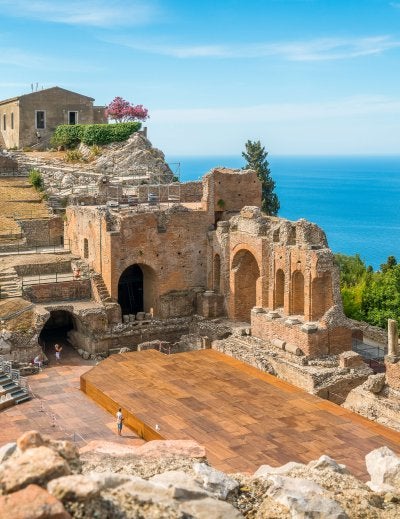
St. Mark’s Basilica: A Complete Guide to Venice’s Most Iconic Landmark
If there’s one place that captures the grandeur and spirit of Venice, it’s St. Mark’s Basilica. Located in the heart of Piazza San Marco, this magnificent cathedral reflects centuries of Venetian history, artistry, and devotion. To explore more nearby landmarks, see Things to do in Venice.
History of St. Mark’s Basilica
Dedicated to Saint Mark the Evangelist, the patron saint of Venice, the basilica was built to house his relics. According to legend, in 828 AD, Venetian merchants smuggled the saint’s remains out of Alexandria, Egypt, hiding them under barrels of pork to evade inspection. A storm struck on their voyage home, but they survived, an event Venetians believed was thanks to St. Mark’s protection.
The first church was built near the Doge’s Palace in 832, but it was destroyed in a fire during an uprising in 976. Reconstruction began soon after, and the current structure took shape by 1063.
Architectural Highlights
St. Mark’s Basilica is a masterpiece of Byzantine architecture, blending influences from East and West. Its five grand domes and ornate façades are decorated with sculptures, arches, and columns, many of them spoils from Constantinople.
Western Façade
Facing the square, this façade features golden mosaics depicting biblical scenes such as the Last Judgment and the Resurrection. Above the left doorway, the Porta di Sant’Alipio mosaic shows the smuggling of St. Mark’s relics.
Southern Façade
This side overlooks the lagoon and displays Gothic details and Byzantine mosaics, including a 13th-century image of the Virgin Mary between two griffins. You’ll also find The Tetrarchs, a striking 4th-century statue brought from Constantinople.
Northern Façade
Known as the “Door of Flowers,” this entrance includes carvings of prophets, angels, and an ancient nativity scene surrounded by lambs symbolising the Apostles.
The Domes
The five domes sit at the intersections of the Greek cross design. The large outer domes, made of wood and lead, were added to impress sailors approaching Venice. The true brick domes inside lie much lower, covered in intricate mosaics.
Inside the Basilica
Stepping inside reveals a dazzling display of marble, mosaics, and treasures collected over centuries.
Golden Mosaics
Over 85,000 square feet of golden mosaics cover the walls and ceilings. Each tile contains real gold leaf between glass layers, creating a warm glow that shifts with the light. Visit between 11:30 am and 12:45 pm to see the mosaics fully illuminated.
Marble Floors
The floors are covered in over 22,000 square feet of marble, forming geometric and floral designs. Look closely and you’ll spot animals like foxes, peacocks, and even a rhinoceros.
The Pala d’Oro
This Byzantine altar screen is made of gold and decorated with 1,927 gems, including sapphires, emeralds, rubies, and pearls. It portrays scenes from the life of Christ and took more than three centuries to complete.
The Treasury
This collection of 283 gold and silver objects includes artifacts looted from Constantinople in 1204, as well as ancient Egyptian vases and Byzantine reliquaries.
The Tomb of St. Mark
In the crypt beneath the church lies the believed resting place of St. Mark himself. Access is usually granted on special guided tours.
Museum and Terrace
The museum displays artifacts and the original Quadriga, four bronze horses taken from Constantinople. Replicas now stand on the balcony terrace, which offers one of Venice’s best panoramic views over the square and lagoon.
St. Mark’s Campanile
Next to the basilica stands St. Mark’s Campanile, Venice’s tallest structure at 323 feet. Originally built in the 10th century as a watchtower, it collapsed in 1902 and was rebuilt exactly as before by 1912.
The bell tower’s five bells once marked every event in the city’s life, from the start of work to public executions. An elevator now whisks visitors to the top in just 30 seconds, revealing a breathtaking view of Venice’s rooftops.
St. Mark’s Square
The basilica faces Piazza San Marco, Venice’s main public square and a lively gathering place surrounded by historic landmarks.
Highlights include the Doge’s Palace, the Museo Correr, and the Clock Tower with its intricate Renaissance mechanism. Enjoy a coffee at Caffè Florian or Gran Caffè Quadri, both offering a classic Venetian atmosphere.
The square often floods during high tides, a phenomenon known as acqua alta. Since 2020, the MOSE barriers have helped protect the city from the worst of these tides.
Visiting Information
Lines to enter the basilica can be long, so it’s wise to buy tickets online to skip the queue.
- Basilica entrance: €3
- Pala d’Oro: €5
- Museum & Terrace: €7
- Bell Tower: €10 (€12 online)
Combined online tickets offer faster entry for €6–€20, depending on what you visit.
Visiting Tips
- Dress code: Shoulders and knees must be covered.
- Bags: Backpacks and large luggage are not allowed. Storage is available nearby.
- Photography: Not permitted inside the basilica.
- Best time to visit: Early morning or evening tours, when crowds are light and mosaics are illuminated.
- Bring binoculars: They help you appreciate the ceiling details.
How to Get There
St. Mark’s Basilica is located in the heart of Venice, in Piazza San Marco.
- Vaporetto (waterbus): Take line 1 to San Marco Vallaresso or line 2 to San Marco Giardinetti.
- Private water taxi: Ask to stop at the Todaro landing stage.
- On foot: It’s a 30-minute walk from Piazzale Roma, following signs to San Marco.
Visiting St. Mark’s Basilica is not just a sightseeing stop; it’s a journey through Venice’s history and artistry. From its glittering mosaics to its panoramic terraces, this landmark remains one of the city’s most unforgettable experiences.



